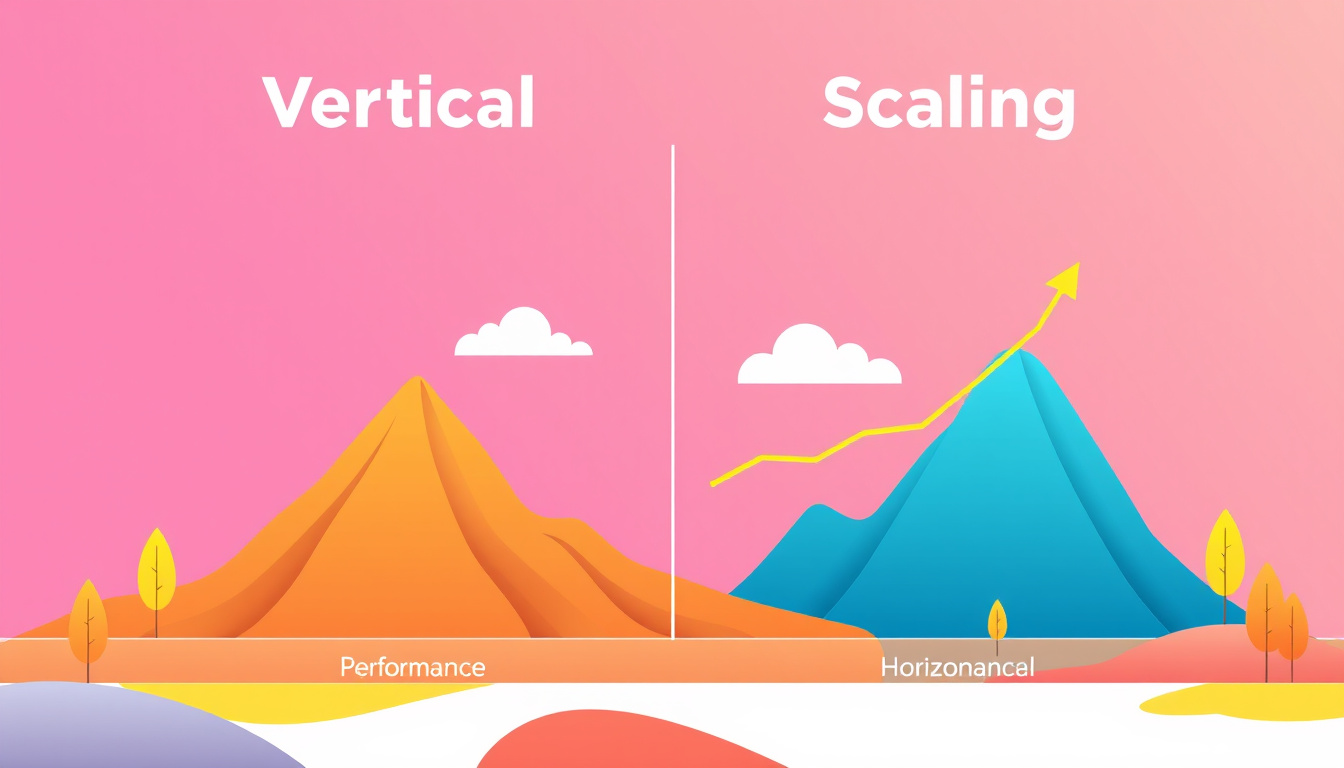As businesses evolve, they face the critical challenge of managing growth without sacrificing performance. Scalability is pivotal in this regard, allowing systems to adapt to increasing demands seamlessly. This article explores scalability options in detail, illuminating how businesses can leverage vertical and horizontal scaling to enhance performance, manage growth, and ensure system reliability.

Understanding Scalability
Scalability refers to a system’s ability to accommodate an increasing workload or demand without a significant drop in performance. This is crucial for businesses aiming to expand their operations, as it ensures that user traffic, data volumes, and computational demands can all be managed efficiently. Whether you are running a website, mobile application, or complex database, implementing the correct scalability strategy can mean the difference between thriving and falling short in the face of growth.
Importance of Scalability
-
Managing Growth: A scalable system can handle more users and data without compromising speed or reliability, an essential feature for businesses planning to grow their customer base.
-
Increased Performance: By distributing workloads across multiple resources—either servers or services—scalable systems enhance overall processing speed and responsiveness.
-
Ensuring Availability: Scalability guarantees that systems remain operational even during traffic spikes or component failures, which is vital for mission-critical applications.
-
Cost-Effectiveness: Scalable solutions can adapt resources dynamically, preventing oversupply and driving cost savings by using only what is necessary.
-
Encouraging Innovation: Scalability allows organizations to implement new features or services quickly, reducing the infrastructure barriers that stifle innovation.
Scalability Options: Vertical vs. Horizontal
When it comes to scalability, businesses typically lean towards two primary strategies: vertical scaling and horizontal scaling. Both methods have unique advantages and challenges that can significantly affect an organization’s operations.
Vertical Scaling (Scaling Up)
Vertical scaling involves increasing the capacity of a single machine or server by adding resources like CPU power, RAM, or storage. This approach is straightforward and can be implemented without significant changes to the architecture.
Advantages of Vertical Scaling:
- Simplified Management: Managing a single server is less complicated than handling multiple machines.
- Immediate Performance Boost: Adding resources to an existing server can lead to significant performance improvements.
Disadvantages of Vertical Scaling:
- Limited Capacity: There is a ceiling on how much one machine can be upgraded, creating a bottleneck as demand grows.
- Higher Costs: Upgrading to high-performance hardware can be more expensive than adding multiple lower-cost machines.
- Single Point of Failure: Relying on one server means that its failure can lead to significant downtime.
Example: If a web application begins receiving more traffic, a company might upgrade from a server with 4 CPU cores and 8GB of RAM to one with 8 cores and 16GB.
Horizontal Scaling (Scaling Out)
Horizontal scaling, on the other hand, entails adding more machines or servers to distribute the workload. This method allows companies to handle larger loads by balancing requests across multiple nodes.
Advantages of Horizontal Scaling:
- Improved Fault Tolerance: If one server fails, others can share the load, reducing the risk of downtime.
- Increased Capacity and Performance: More servers can process more requests simultaneously, improving response times and overall system efficiency.
- Elasticity: Businesses can quickly adjust resources based on demand by adding or removing servers.
Disadvantages of Horizontal Scaling:
- Increased Complexity: Managing multiple servers can require more sophisticated networking, load balancing, and operational strategies.
- Higher Initial Costs: The cost of setting up multiple servers can be substantial compared to upgrading existing hardware.
Example: A growing online retailer might deploy multiple servers to accommodate a spike in traffic during sales events, leveraging load balancers to efficiently route customer requests across these servers.
Choosing the Right Scalability Option
Deciding between vertical and horizontal scaling often depends on specific business needs and future growth predictions. For smaller businesses or those with predictable growth patterns, vertical scaling may initially offer a more straightforward and cost-effective approach. However, as a business grows, the limitations of vertical scaling may necessitate a transition to horizontal scaling to ensure long-term sustainability and performance.
Hybrid Approaches
Many organizations opt for a hybrid approach, implementing both vertical and horizontal scaling strategies to maximize flexibility and efficiency. For instance, a business might start with vertical scaling to stabilize its operations before gradually distributing its workload across more servers through horizontal scaling as demands increase.
Conclusion
Scalability is a cornerstone of business growth that allows companies to adapt to an ever-changing landscape while maintaining performance and reliability. By understanding the key differences between vertical and horizontal scaling—and recognizing when to implement each strategy—businesses can unlock their full potential, ensuring they are well-equipped to handle an expanding user base and increasing operational demands. Embracing the right scaling options not only supports current requirements but also positions organizations for future success in an increasingly competitive environment.



